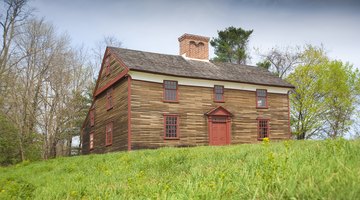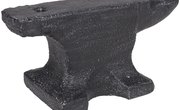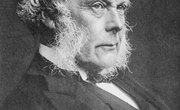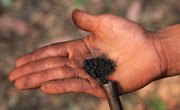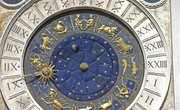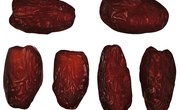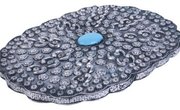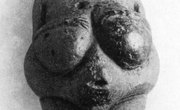Before germ theory and modern medicine, apothecaries served as the equivalent of today's pharmacists. Apothecaries could also prescribe and make the remedies, which made them like today's doctors and manufacturers as well. In order to carry out all of these tasks, Colonial apothecaries needed several specialized tools.
Tip
Apothecary tools in Colonial times included scales, mortar and pestles, surgical equipment, herbs and jars.
How Apothecaries Healed
When people saw the apothecary sign in Colonial times, they knew they could stop to get herbs that may heal what ailed them. However, people in these times did not have our modern understanding of infections, viruses and other ailments. Instead, Colonial apothecary methods more closely mirrored what you may think of as traditional or Eastern medicine.
Most apothecaries in Colonial times learned their healing methods through apprenticeships, which were common for many careers at the time. Some also studied at medical schools, but this education method was not always readily available.
Apothecaries used herbs, spices and sometimes surgery to heal their patients. They sometimes made pills, which were dried herbs that they bound with honey or other substances.
Colonial Apothecary Herbs and Uses
Apothecaries used the experiences of those who went before them to prescribe medicines. Professionals learned which herbs had which effects on people over hundreds and thousands of years of observation. In the Colonial times, apothecaries commonly used:
- Bergamot
- Lavender
- Mint
- Basil
- Dill
- Thyme
- Rosemary
- Sage
- Pennyroyal
These plants and more grew well in the colonies and affected patients in specific ways. Apothecaries would mix herbs to create several classes of medications, including pain relievers, vomit inducers, fever reducers and inflammation reducers.
Types of Colonial Apothecary Medications
These professionals used Colonial apothecary herbs in many different ways. Not only did they create the precursor to modern pills, but apothecaries also created topical ointments, teas and concentrated liquids. They used specialized tools to make each of these types of medicines.
Basic Apothecary Tools of Colonial Times
Weights and scales were some of the most important tools apothecaries used. They measured the amount of each herb that went into a medication. Furthermore, they used the scales to weigh the dosages for each patient.
Mortar and pestle sets were of equal importance for apothecaries. They used these tools to grind herbs into fine powders and pulps. They could then use these powders to make their pills and ointments.
Apothecary jars have made a comeback as a decorative item in some homes or even as Halloween decorations. However, these were necessary tools for apothecaries in Colonial times. These tight-sealing jars kept herbs fresh enough to use when needed.
Surgical Tools for Colonial Apothecaries
Some apothecaries in this era also performed surgeries. They would often need full tool kits to perform these tasks. Like today's surgeons, apothecaries used various sizes of cutting tools in their surgeries.
They also performed some dental surgeries, which meant that many apothecaries kept tooth extractors on hand. They may also have tongue scrapers available to them.
Surgeries also required needles and fine thread to stitch up patients. They sometimes used alcohol or opiums as pain relievers, but they did not have the technology to put patients under general anesthesia.
Other Important Tools for Apothecaries
Apothecaries also carried different forms of bandages to cover wounds, even though they did not understand what caused infections like we do today. They often made these bandages out of linen cloth.
These professionals also needed certain cooking tools since making medications often required heat. For example, they used tea kettles to make certain remedies.
While apothecaries in the Colonial era did not have the same knowledge and resources that modern doctors have, they treated their patients with the best tools they had at the time. With herbs, tools, surgical instruments and more, they helped people face terrifying illnesses.
Related Articles
References
Writer Bio
Mackenzie attended Texas Tech University, where she worked in the residence halls for three years. She also volunteered for school event committees and move-in welcome teams. These experiences fueled her passion for higher education and helping college students. Today, she uses her writing to help prospective college students find the right institutions for their needs. She writes for sites like The Best Schools, Nursing.org, Best Colleges, Nurse Journal, and PublicHealth.org.

